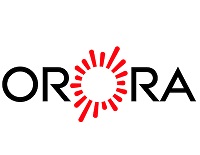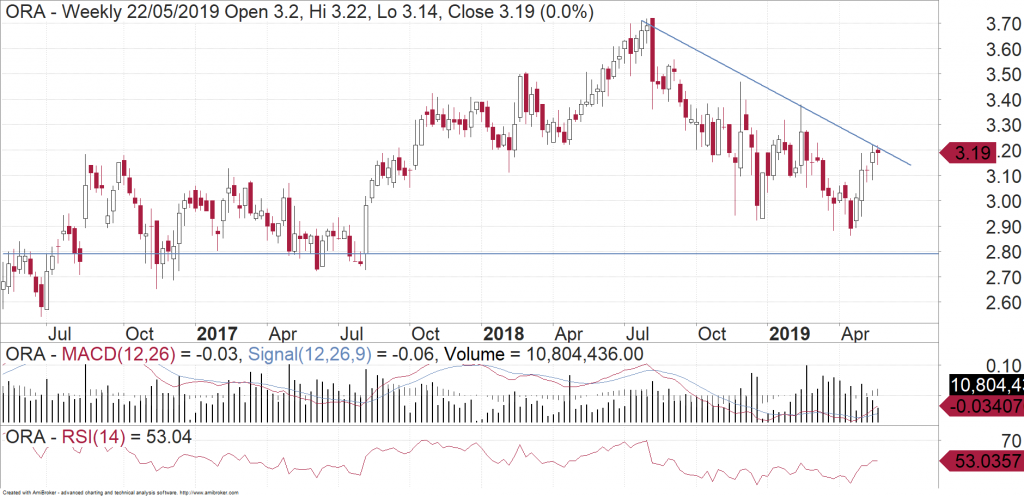Orora (ASX:ORA) is a high quality business that would be worth buying. For now though, it is one for the watchlist. This is why.
After Orora (ORA) reported its half-yearly results in February. We recently downgraded our recommendation to NEUTRAL on the basis that overall earnings growth was likely to be impacted by challenges in the North America division. This is despite the resilience of the Australasian division. We revisited the Company’s fundamentals more recently, after the release of a trading update in early May. This was with a view to reassessing whether there has been any change to our previous stance on the Company.
About Orora
The Company categorises its operating segments along two geographical lines: The North America division and the Australasian division.
The North America division (which accounted for 53% of group revenue 23% of group EBIT in 1H19) comprises three main units. They are Orora Packaging Solutions (OPS), Corrugated board manufacturing and Orora Visual, which is the Point of Purchase (PoP) Display business that the Company first entered in March 2016. The Australasian division comprises two business groups: Fibre (Packaging and the Botany Recycled Paper Mill (B9)) and Beverages (beverage cans and glass).
Challenging Conditions In North America Likely To Continue
The key business unit within the North America division is OPS, which accounts for 70% of the North America division’s sales. In recent periods, this business has struggled as a result of ongoing work required to integrate recent acquisitions, which has included the rollout and optimisation of a new ERP system.
An improvement in trading conditions is expected once the implementation is completed. This is because the Company would be in a better position to secure new customer acquisitions and reduce implementation costs associated with future acquisitions. However, a meaningful acceleration in growth was unlikely until FY20, with 2H19 featuring continuation of challenging market conditions in distribution (OPS). Further, while ORA has seen some improvement in March and April, the Company expects these challenging market conditions to continue. This is supported by recent results from US peers, which indicate subdued near-term demand.
In relation to the Orora Visual business unit, the Return on Funds Employed remains around 8-9%. This was well behind the targeted return of 15-20%. Profitability has been impacted by additional costs associated with the integration of the acquired businesses in the Orora Visual segment. Also, volume was lost from a recent contract loss being replaced by lower-margin volumes.
Focus on Cost Savings Given Mixed Trading Conditions for Australasia Division
The recent trading update showed that demand across the key end market remains mixed in Australia & NZ. Glass volumes are lower with wine exports to China weakening; however, the fruit produce area and cans were both quite strong. ORA finished April in line/just ahead of sales expectations, with adverse weather conditions in North Queensland in early calendar 2019 having a minor impact, as expected.
The Company is facing input cost pressure, an area which is receiving greater focus in light of the mixed trading conditions in the Australasia division. The key area of focus in terms of managing input costs is energy costs, while other input cost movements, such as kraft and starch prices, OCC and US paper prices continue to be well managed with impacts consistent with what ORA has flagged previously.
When Will Balance Sheet Capacity Be Utilised?
The Company retains significant balance sheet capacity to pursue further acquisitions, however further acquisitions over the next 6-12 months still appear unlikely, given that:
i. ORA is still in the process of integrating acquisitions in the Orora Visual business segment and
ii. The recent acquisitions (Bronco and Pollock) are tracking to plan and need to be bedded down, as both the margin and return for these businesses are relatively low and need to improve.
We continue to view that the earliest timeframe for the next acquisition (typically North-America focussed) as being likely in 2H20, given that potential transactions can take months to be completed, as well as the fact that asset prices remain somewhat elevated. However, acquisition multiples in North America have recently come back and prices are more attractive relative to historical levels.
Fundamental View
We continue to see ORA as a high-quality, defensive business with a strong balance sheet and an experienced management team. However, it is still too early to reconsider ORA as an investment opportunity in light of the factors referred to in this note.
The weaker-than-expected trading update have led to earnings downgrades of 1-3% and Company guidance is vague, indicating a high degree of uncertainty. Accordingly, we still consider the 1-year forward P/E multiple of ~16.5x to be disproportionate to mid-single digit consensus EPS growth estimates for FY19/20.
Charting View
ORA has been in a downtrend since peaking in August 2018. It has bounced higher in the last few weeks. However, at this point it looks like it will form another “lower high”. Unless we start to see a “higher low” and “higher high”, the path of least resistance for ORA at the moment is to the downside. We can see strong support lower down near $2.75.

Michael Gable is managing director of Fairmont Equities.
Current share prices available here.
You can learn more about technical analysis in this article.
An 8-week FREE TRIAL to The Dynamic Investor can be found HERE.
Would you like us to call you when we have a great idea? Check out our services.
Disclaimer: The information in this article is general advice only. Read our full disclaimer HERE.
Like this article? Share it now on Facebook and Twitter!

